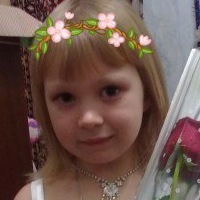
На английском языке надо рассказать про Канаду(традиции её,про людей,какие праздники там есть,нуу и
всякое такое....) 0
0
 0
0
Ответы на вопрос
 Внимание! Ответы на вопросы дают живые люди. Они могут содержать ошибочную информацию, заблуждения, а также ответы могут быть сгенерированы нейросетями. Будьте внимательны. Если вы уверены, что ответ неверный, нажмите кнопку "Пожаловаться" под ответом.
Внимание! Ответы на вопросы дают живые люди. Они могут содержать ошибочную информацию, заблуждения, а также ответы могут быть сгенерированы нейросетями. Будьте внимательны. Если вы уверены, что ответ неверный, нажмите кнопку "Пожаловаться" под ответом.

The climate of Canada varies from temperate in the south to subarctic and arctic in the north. The highest Canadian point is Mount Logan 5,959 m. The population of Canada is about 32 million people. There are two state languages: English and French. English is spoken by 60 % of population; French is spoken by 23 % of people.
Most of Canada's inhabitants live in the southern part of the country and vast areas of the north are sparsely inhabited. The country is divided into ten provinces (Alberta, British Columbia, Manitoba, New Brunswick, Newfoundland, Nova Scotia, Ontario, Prince Edward Island, Quebec, Saskatchewan) and three territories (Northwest Territories, Yukon Territory, Nunavut Territory). The third territory called Nunavut, to be carved from the present Northwest Territories, was created in 1999.
The name Canada is derived from an Iroquoian term meaning «village».
Among the great rivers of Canada there are the Saint Lawrence River, draining the Great Lakes and emptying into the Gulf of Saint Lawrence; the Ottawa and the Saguenay rivers, the principal affluents of the Saint Lawrence River; the Saint John River, emptying into the Bay of Fundy.
The government type is confederation with parliamentary democracy. The capital of Canada is Ottawa.
Canada became independent from the United Kingdom on July, 1, 1867. Legal system is based on the English common law, except in Quebec, where civil law system based on the French law prevails.
The racial and ethnic makeup of the Canadian people is diversified. About 35 percent of the population is composed of people of the British origin. People of the French origin total about 25 percent of the population. The vast majority of French-speaking Canadians reside in Quebec, where they make up about three-fourths of the population; large numbers also live in Ontario and New Brunswick.
French-speaking Canadians maintain their language, culture, and traditions, and the federal government follows the policy of a bilingual and bicultural nation. During the 1970s and 1980s the proportion of Asians among the Canadian population increased, and today those who count their ancestry as wholly Asian make up 8 to 10 percent of the population. More than two-thirds of the Asian immigrants live in Ontario or British Columbia. The remainder of the population is composed of people of various ethnic groups, such as German, Italian, Ukrainian, Netherlands Dutch, Scandinavian, Polish, Hungarian, Greek, and Native American. Blacks have never constituteda major segment of the Canadian population. Indigenous people make up nearly 2 percent of Canada's inhabitants.
The largest religious community in Canada is Roman Catholic. Nearly half of Canadians who are Roman Catholic live in Quebec. Of the Protestant denominations in Canada the largest is the United Church of Canada, followed by the Anglican Church of Canada. Other important Protestant groups are the Baptist, Presbyterian and Lutheran. Nearly 2 percent of the population are Orthodox. Muslim and Jewish adherents each number about 1 percent. A substantial number of Buddhists, Hindus and Sikhs have been brought to the country in recent years by immigration. Nearly 13 percent of Canadians claim no religion.
 0
0
 0
0

Canada is a country known for its rich traditions, diverse population, and vibrant celebrations. Let's delve into some of the key aspects of Canadian culture.
Firstly, Canadian culture is greatly influenced by its Indigenous peoples, as well as by the French and British settlers. This has resulted in a unique blend of traditions and customs that are celebrated throughout the country. Indigenous cultures are particularly rich and diverse, with each community having its own traditions, languages, and art forms.
In terms of people, Canadians are known for their friendly and polite nature. They are often described as being very welcoming and inclusive, which is reflected in the country's multiculturalism. Canada is home to people from all over the world, which has led to a rich tapestry of languages, cuisines, and traditions.
When it comes to holidays and celebrations, Canada has a variety of festivals and events that showcase its cultural diversity. For example, Canada Day on July 1st is a national holiday that celebrates the country's confederation. It typically involves fireworks, parades, and concerts, with people proudly displaying the Canadian flag. Additionally, Thanksgiving is celebrated in October, bringing families together for a feast to give thanks for the harvest and blessings of the past year.
In terms of winter celebrations, Christmas is widely observed, with decorations, festive markets, and gatherings with family and friends. In some regions, the French tradition of celebrating "La Chandeleur" or Candlemas is also observed with crepe-making and other activities.
Moreover, Canada's multicultural makeup means that various cultural festivals are celebrated throughout the year, such as Chinese New Year, Diwali, and Eid al-Fitr, reflecting the diversity of the Canadian population.
In conclusion, Canada's traditions, people, and holidays reflect the country's rich multicultural heritage, making it a vibrant and inclusive society with a wide range of customs and celebrations.
 0
0
 0
0
Топ вопросов за вчера в категории Английский язык
Последние заданные вопросы в категории Английский язык
-
Математика
-
Литература
-
Алгебра
-
Русский язык
-
Геометрия
-
Английский язык
-
Химия
-
Физика
-
Биология
-
Другие предметы
-
История
-
Обществознание
-
Окружающий мир
-
География
-
Українська мова
-
Информатика
-
Українська література
-
Қазақ тiлi
-
Экономика
-
Музыка
-
Право
-
Беларуская мова
-
Французский язык
-
Немецкий язык
-
МХК
-
ОБЖ
-
Психология
-
Физкультура и спорт
-
Астрономия
-
Кыргыз тили
-
Оʻzbek tili

















